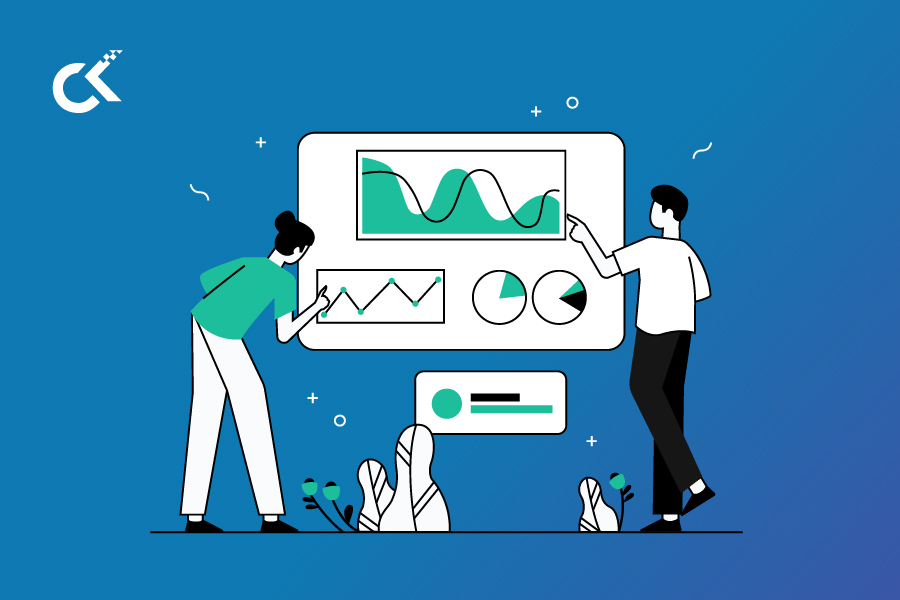Imagine managing a city’s power grid with real-time insights into millions of energy meters – predicting surges, pinpointing outages, and tailoring plans based on weather and individual needs. That’s the transformative power of data analytics in the energy & utilities sector.
Data analytics plays a crucial role in the energy & utilities sector, revolutionizing the way utilities operate, manage resources, and serve their customers. Companies in the sector are no longer only providers of energy, but also receivers and processors of energy and consumption data. Energy data analytics leverages big data, statistical software and machine learning (ML) techniques to analyse energy production and consumption. By harnessing the power of data, energy & utility companies can gain valuable insights, optimize their operations, and make informed decisions that lead to higher efficiency, reliability, and customer satisfaction while reducing wasteful production and costs. Future market behaviour and customer consumption patterns become easier to understand and predict too.
The growing demand for data analytics in the energy sector is largely a result of the role big data analytics plays in improving energy efficiency and reducing energy consumption. In fact, a market intelligence and advisory report states that the big data analytics market in the energy sector is expected to grow significantly — at a CAGR of 11.28 percent — from USD 8.37 billion in 2023 to USD 14.28 billion in 2028. While the largest market is the North American market, the fastest growing market is in the Asia Pacific region.
8 Business use cases: Data analytics in the energy & utilities sector
- 1. Grid optimization
Data analytics enables utilities to analyse vast amounts of data from numerous sources, such as smart metres, sensors, and SCADA systems, and optimize the performance of the power grid. By collecting and analysing data, utilities can identify patterns, detect anomalies, and predict potential failures. This information helps them proactively address grid issues, minimize downtime, and enhance grid stability and reliability.
- 2. Demand response and load management
Customer energy consumption patterns and opportunities for demand response and load management programmes can be better identified. Historical data and real-time information can help identify peak demand periods and effectively manage the load on the grid. Strain on the grid during peak periods is reduced, power generation and distribution is optimized and lower operational costs are lowered.
- 3. Asset management
Data analytics plays a vital role in optimizing asset management for utilities. By collecting and analyzing data from equipment sensors, utilities can monitor the health and performance of their assets in real-time.
- 4. Proactive maintenance
Predictive analytics can help identify maintenance needs and potential equipment failures before they occur, enabling utilities to schedule proactive maintenance and minimize costly downtime.
- 5. Energy theft detection
Employ advanced analytics to detect unusual consumption patterns that may indicate energy theft or meter tampering. This helps utilities identify and address these issues promptly, preserving revenue and ensuring fair billing.
- 6. Renewable energy integration
Data analytics is instrumental in facilitating the integration of renewable energy sources into the grid. By analysing weather patterns, historical data, and real-time information from renewable energy generators, utilities can optimize the integration and management of these intermittent energy sources.
Analytics can assist in forecasting renewable energy generation, optimizing power dispatch, and managing the grid’s stability and reliability while maximizing the utilization of renewable resources.
- 7. Carbon footprint reduction
Use data analytics to monitor and analyze energy consumption patterns, identify areas for improvement, and implement strategies to reduce carbon emissions. This supports the transition to more sustainable and environmentally friendly practices.
- 8. Regulatory compliance and risk management
By analyzing data related to compliance regulations, utilities can ensure they meet reporting obligations, monitor emissions, and adhere to environmental standards. Furthermore, analytics can identify potential risks and vulnerabilities in the grid, enabling utilities to implement proactive measures to mitigate those risks and ensure system reliability and security.
Data analytics is certainly transforming the energy & utilities sector. By adopting data analytics, energy & utility companies are better equipped to meet the evolving demands of the modern energy landscape and deliver efficient, reliable, and sustainable energy services to their customers.




